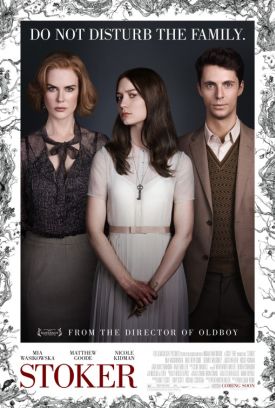Demoiselles de Rochefort, Les
Les Demoiselles de Rochefort—which the American distributors are translating as The Young Girls of Rochefort—was directed by the late Jacques Demy in 1967 and now appears recut and restored by Demy’s widow, Agnes Varda. It is a strange—indeed, sometimes hilariously weird—but oddly charming French attempt at a Hollywood musical which stars the young Catherine Deneuve and her real life sister, Françoise Dorleac (who died shortly after doing this picture) as twin sisters, Delphine and Solange Garnier, who live and teach music and dance in the provincial French town of Rochefort. They are both in search of their ideal men. Unbeknownst to them, their ideal men are independently in search of their ideal women who, not surprisingly, turn out to be them. Meanwhile their mother, Yvonne (Danielle Darrieux), is pining for the man she let get away for no other reason than that he had a silly name, M. Dame. Rather than marry him and become Madame Dame, she told him ten years ago that she had run off to Mexico with a tycoon, though in fact she had moved to Rochefort with her daughters by a previous liaison and Mr. Dame’s love child, Boo Boo.
Now, for the sort of absurd reasons that musical comedies have always depended on, all these people find themselves in Rochefort at the same time, together with a carnival, or kermesse, featuring singing and dancing carnies in 1960s Day-Glo colors and go-go boots, one of whom is George Chakiris. The other American star imported to add a touch of class is Gene Kelly, who appears as Andy Miller, an American concert pianist and destined lover of Solange. He has come to Rochefort to visit an old friend from the conservatory who turns out to be none other than M. Dame (Michelle Piccoli). Kelly has pretty obviously been out of the conservatory for more than the ostensible ten years, but we scarcely mind about this. And Delphine’s predestinate soul mate, Maxence (Jacques Perrin), is made a sailor (though he is also an abstract painter) as a kind of oblique tribute to the young Kelly, whose swabbing days were over by this time. Maxence’s only figurative painting is of his ideal woman and looks exactly like Delphine, whom he has never met.
Will they meet? It’s a musical isn’t it? Yet Demy manages adroitly to keep the lovers apart and unknown to each other throughout almost the whole of the picture. Indeed, the long delayed meeting between Delphine and Maxence is even deferred until after the final credits have come up. The result is a strong sense of love as the working out of some cosmic destiny—a notion central to the idea of romantic love, though rarely so insisted upon as it is here. It is a kind of reverse French farce, a farce without the cynicism, as doors slam or people turn their backs at just the right moment to miss (temporarily of course!) the love and happiness intended for them by God or the fates. Everything in the picture is devoted just to getting the lovers through their artificial obstacle courses to the point of meeting, and all the songs by Michele Legrande are about wistful longing and quite lovely, in spite of some lyrics so corny as to make Hammerstein sound like Wagner.
The charm of such wistfulness comes from our knowing that Mr and Miss Right are, literally, just around the corner. Mr Demy’s whirling and gyrating camera is sure to catch them sooner or later. But there is also a dark side to love. Old Monsieur Dutrouz is known as a pessimist who turns out to be the mysterious “sadist” who has hacked up a woman, a former chorine called Lola Lola, with an axe till she looked like a jigsaw puzzle and dumped the pieces in a hamper. Lola Lola had turned down his advances for 40 years, we are told—“but that’s no reason to carve her up,” the sensible twins observe. This is perhaps Demy’s gesture of solidarity with the incipient sexual revolution (see what repression leads to?), but we can be sure that Lola Lola’s mistake is not one that the Garnier sisters—or (now) their mother—will be making.
Discover more from James Bowman
Subscribe to get the latest posts to your email.








